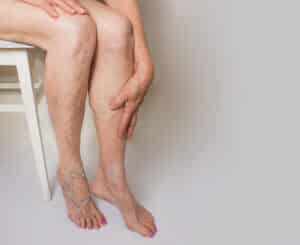
Varicocele symptoms include:
- Pain. A varicocele may cause aching pain when one sits or stands for an extended period. Either position can increase the pressure in the vein. The aching could also worsen with heavy lifting.
- Fertility issues. Varicoceles have been named as a contributing factor to male infertility. However, research does also show that it can be difficult to pinpoint this condition as a primary cause. Some of the ways that fertility may be affected by a varicocele include decreased sperm count, increased number of deformed sperm, and a decrease in sperm motility. While more research is needed, it is believed that varicoceles may contribute to these problems by increasing the temperature of the testicles, where sperm are produced. Studies have shown that 50 to 70 percent of men with coinciding fertility problems and a varicocele see significant improvement in sperm quantity and quality after varicocele repair.
- Testicular atrophy. Varicoceles may lead to the shrinkage of the affected testicle. When the varicocele is repaired, there is a good chance that the smaller testicle will return to normal size.
Varicocele Treatment
Historically, varicocele repair has been performed in an open surgery. More recently, doctors have begun performing minimally invasive varicocele embolization. This is the procedure we perform here at the Vascular Institute of Virginia.
Varicocele embolization is an outpatient procedure performed by an interventional radiologist. The procedure is advantageous because there is no general anesthesia, no incisions, and no stitches. According to studies, the results of varicocele embolization are comparable to surgery, but without the downtime. The embolization is performed using local anesthesia and mild sedation. Patients are comfortable throughout their treatment, during which the doctor inserts a catheter into the jugular vein in the neck. The thin catheter is passed to the faulty vein in the scrotum or testicle with help from x-ray imaging. When at the target point, the catheter delivers tiny Dacron filaments that cause the vein to close off.
While every patient is different, recovery from varicocele embolization typically takes less than 24 hours. Many patients return to work the next day.
The team at the Vascular Institute of Virginia offers precision care centered on each patient’s needs. Contact us at 703-763-5224 to schedule a visit to our Woodbridge or Fredericksburg facility.

